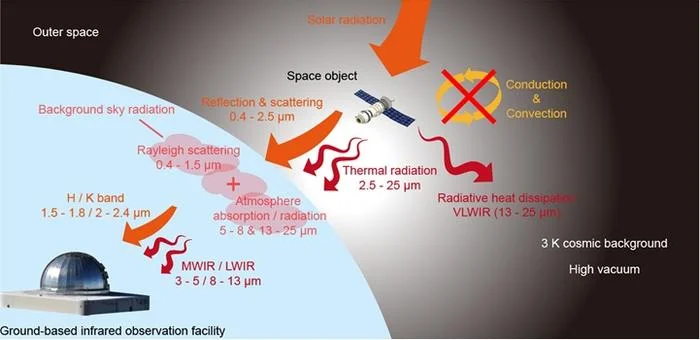
Infrared Cloaking Tech Could Make Satellites ‘Invisible’ to Earth-Based Sensors
As the number of satellites orbiting Earth skyrockets, protecting these valuable assets from detection becomes increasingly crucial. A team of researchers at Zhejiang University may have just unveiled a groundbreaking solution: infrared camouflage that could make satellites virtually undetectable to ground-based sensors.
Led by Professor Qiang Li, the team has developed a novel approach that addresses the most reliable method for locating satellites: infrared detection. Current methods like visual and microwave detection have limitations, making infrared the preferred choice for constant monitoring.
The challenge was to create a camouflage that could withstand the extreme conditions of space, including intense solar radiation. Earlier attempts often fell short. Li's team focused on manipulating the infrared energy distribution across various wavelength bands.

Their innovative solution involves a multilayer thin-film device, a mere 4.25 micrometers thick, composed of materials like ZnS, GST, HfO2, Ge, and Ni. This device minimizes reflected solar radiation in the H and K bands, suppresses thermal radiation in the MWIR and LWIR bands, and allows high thermal emission in the VLWIR band to effectively dissipate heat. This is crucial in space, where heat can only be lost via thermal radiation.
Outdoor experiments involving a model satellite showed significant differences between exposed and camouflaged surfaces when observed with infrared cameras. The camouflaged areas closely matched the sky's background temperatures, while exposed surfaces were considerably warmer. Similarly, in laboratory conditions mimicking space, the camouflage reduced the device's temperature by nearly 40°C compared to a control metal film.
According to the team, this technology has the potential to reshape space exploration. "This work holds significant prospects for augmenting our capabilities in space exploration and exploitation, thereby paving the way for humanity to venture into expanded realms of habitable space," they stated in their paper published in Light Science & Applications, dated May 27, 2025.
With the space economy projected to reach $1.8 trillion by 2035, protecting valuable space assets is more critical than ever. Could this new infrared camouflage be the key to a stealthier, more secure future in orbit?
What are your thoughts on this infrared cloaking technology? Share your opinions and predictions in the comments below!